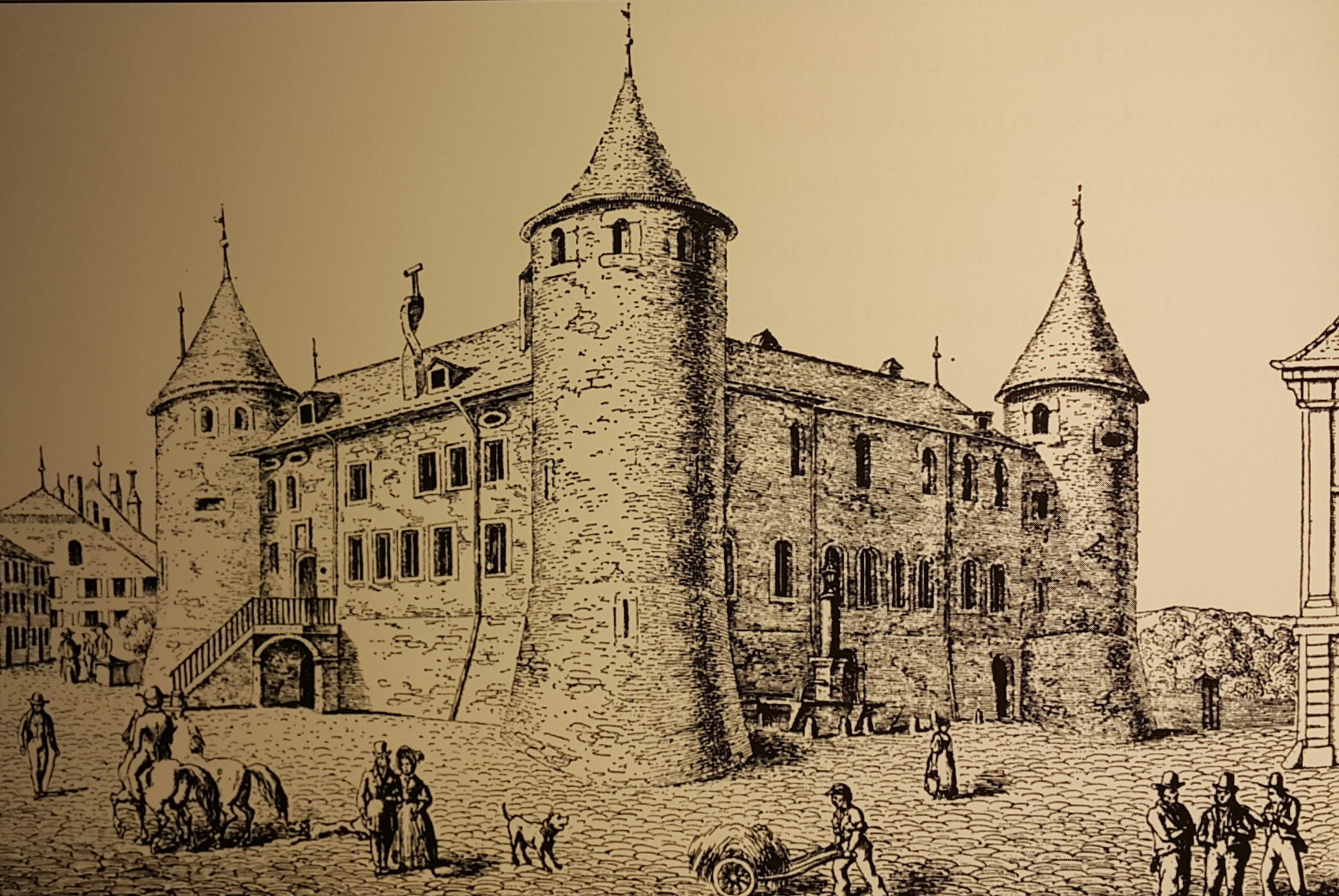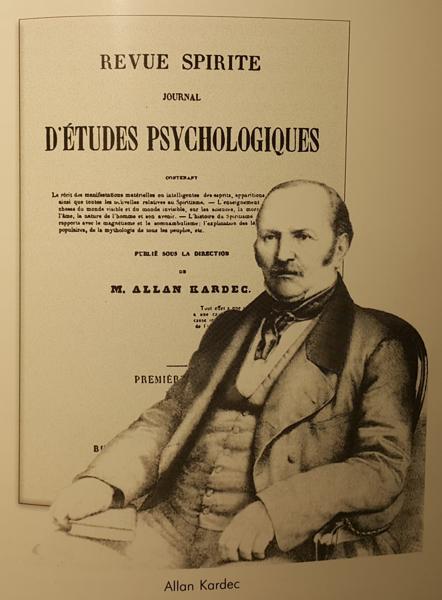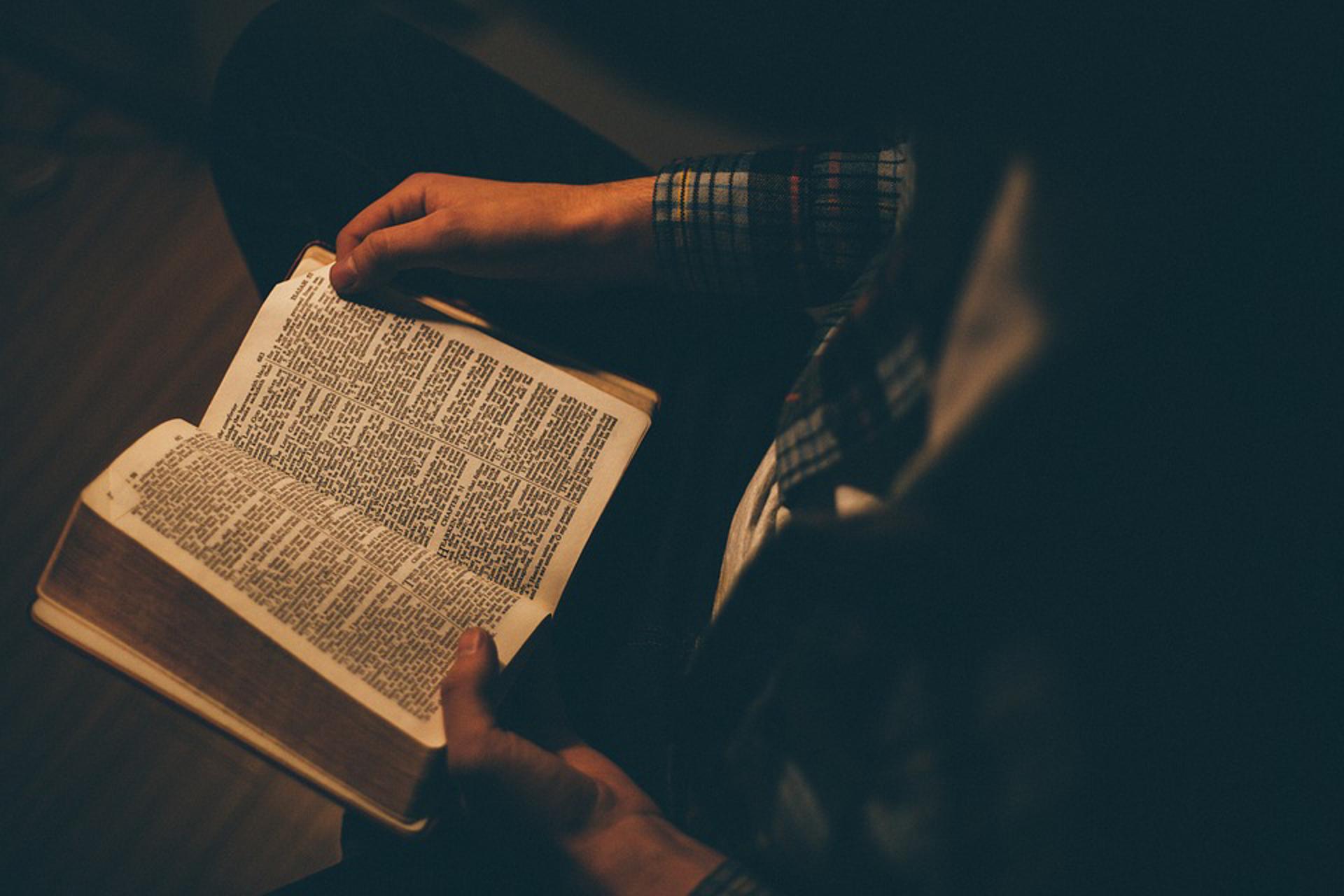The career of Allan Kardec (Part I)

THE CAREER OF ALLAN KARDEC (PART I)
Steve Hume
At the start of this series of articles I wrote that the title 'Spiritualism & the Establishment' is actually rather misleading. What we are really talking about, of course, is the effect that mediumship has had upon the, generally negative, established weight of opinion against itself. At the end of the day 'Spiritualism' is only a handy verbal peg upon which we hang the phenomena of mediumship, and the teachings that issue from it, in a modern context. The 'Establishment' is a further convenient sound symbol that is used to label the generally accepted wisdom (on any given subject) when we perceive this to have been officially endorsed by the most influential in society.
The reason I feel it necessary to reiterate the foregoing is that, for the next few months, I will be using a different word at times when referring to a 'religion' that has coalesced around the concept of mediumship. 'Spiritism' is the word associated with mediumistic practice throughout Latin America, particularly in Brazil where it rivals Catholicism, and the Philippines. However, the influence of one man in particular upon Spiritism may be judged by the fact that the movement is also often referred to in Brazil as 'espiritismo kardecista' or 'Kardecism'.
There are many paradoxes in the impact that the Frenchman Allan Kardec (1804-1869) has had upon human affairs. The chief of these is that his work constitutes the only example of a modern appraisal of mediumship that has had (and continues to have) a truly obvious and major effect upon a very significant section of human society. In his book Spirits and Scientists: Ideology, Spiritism and Brazilian Culture, anthropologist David J. Hess even cited evidence which suggests that the spirit teachings collected by Kardec were a major theoretical influence (Hess almost implies naked plagiarism) on some of the most important founders of modern psychology and psychiatry, such as Pierre Janet.[1] Yet, despite this, Kardec remains almost unknown or poorly understood by Spiritualists in Britain; the most common, and most fatal, error being that he was a medium himself and that the teachings were his own. Arthur Findlay showed his own misunderstanding by dismissing Kardec in the following terms:-
"In Brazil the extensive movement there has been directed by the writings of the Frenchman, Allan Kardec. He, however, influenced the thoughts of his followers more to the doctrine of reincarnation than to the belief in progress advanced by both American and British Spiritualists, and he gave mediumship little consideration." (italics added)[2]
The fact that a third of the most important volumes of Kardec's work was published under the title of "The Medium's Book" may give some indication as to how wide of the mark Findlay was here. This, together with the fact that Spiritism, like Spiritualism, observes the concept of eternal progress as a central tenet, suggests that he was unfamiliar, to say the least, with the Frenchman's work. In fact, the only major difference between Spiritism and Spiritualism is that, in the former case, the 'doctrine' of reincarnation is a central teaching whereas, with Spiritualism, belief in reincarnation, although extremely common, is more generally diffused throughout the movement and there are many Spiritualists who reject the concept with apparent contempt.
However, it is not my intention to fuel the already overheated debate about the reality or otherwise about reincarnation. The only thing that I, personally, can say for sure on this matter is that I don't know, and that I find elements of the arguments from both sides of the debate persuasive on the one hand and, sometimes, hopelessly illogical on the other. What I do hope to show, however, is that Kardec's way of looking at spirit communications of a philosophical nature may have the potential to provide a way forward in increasing our understanding on this issue and, perhaps, also of diffusing some of the acrimony that seems to be provoked on both sides whenever the subject is raised.
But first, if we wish to gain an understanding of why Kardec's work continues to enjoy such relatively spectacular success, and also placeit in its correct context, we must take a look at his background. 'Allan Kardec' was the nom de plume adopted by Hippolyte Leon Denizard Rivail under which he published his books on Spiritism. Rivail was born in Lyon on October 3, 1804 into a family who had, for many generations, been lawyers and magistrates. As a child he showed anaptitude for the sciences and philosophy and, at the age of ten, he was sent to the Pestalozzi Institute in Yverdun.[3] This was the school of the influential Swiss educationalist Johann Heinrich Pestalozzi, whose radically new methods of teaching were attracting pupils from well connected families all over Europe. Hess stresses the importance of this early event in Rivail's life in that the 'Pestalozzi method' of teaching was based on the principles of the Enlightenment. Students were encouraged to embrace ideals of political and social reform and, therefore, although Rivail remained a Catholic, he adopted the open minded attitude of a Freethinker. He came to believe (to quote Hess) that education was 'the key to harmonizing the relations between rich and poor'.[4] These factors must have played a major role in making the spirit teachings that Rivail would encounter later in his life appear so attractive to him. Not only would he be open minded enough not to reject them for religious reasons, but they would also appear to be confirmation of his egalitarian beliefs which ran counter to many of the Church's dogmas.
Also, Rivail arrived at the Pestalozzi Institute at a time of bitter political in-fighting between the domineering administrator, Joseph Schmid and Johannes Niederer, a theoretician who had helped to publicize Pestallozi's ideas. Hess speculates that Rivail probably learned valuable lessons from both men: from Schmid, the political and administrative skills that would later help him to found and maintain an international movement; and from Niederer, the art of presenting new and controversial ideas to a skeptical public and Establishment.[5] Rivail quickly proved himself to be a child genius of rare distinction. The internecine strife at the school caused the resignation of 16 of the masters,[6] and, at the age of fourteen, Rivail was asked to teach his own classmates.[7] He also became one of Pestallozi's favourite pupils and most ardent disciples and left Yverdun with a degree in letters and science and a doctorate in medicine.[8]
After leaving the Pestalozzi Institute Rivail settled in Paris and in 1824 he published his first book. This was based on his own system for teaching mathematics and was reprinted until 1876. The following year, at the age of 21, he opened his own 'First Grade School' and in 1826 he opened another, 'The Rivail Technical Institute'. He taught chemistry, physics, mathematics, astronomy, comparative anatomy and rhetoric, and also spoke nine languages...Italian and Spanish fluently [9]. Rivail also submitted proposals for educational reform to the French Legislative Chamber which were highly praised although not adopted [10].
In 1832, he married Amelie Gabrielle Boudet, a fine arts teacher and writer, but disaster struck in 1835 when huge gambling debts accrued by his uncle, who was also his partner, forced the closure of one of his schools.[11] However, Rivail began writing a series of textbooks on diverse subjects for the French University and also began to give free lessons in his own home.[12] By 1848, when the mediumship of the Fox sisters was creating such a stir in America, he was a well known and highly respected educator who could have existed quite comfortably for the rest of his life by living on the proceeds of his books. In 1854 a friend with a shared interest in the phenomena of mesmerism, a Mr Fortier, told Rivail of the table-turning craze that had, by that time, reached France. He would later recall that Fortier told him how '...not only is a table made to tilt, magnetising it, but it can also be made to speak. Ask it a question, and it replies.' Rivail's response was not untypical of the initial reaction of many other successful nineteenth century academics who would later risk their reputations by publicly endorsing mediumship. He replied 'I will believe it when I see it and when it has been proved to me that a table has a brain to think and nerves to feel and that it can become a sleep-walker. Until then, allow me to see nothing in this but a fable told to provoke sleep.'[13]
Like many others in America and England, Rivail assumed that table-turning was a 'purely material effect' and it was not until the following year that he allowed himself to be persuaded to attend a table-turning session in the home of one of Fortier's mesmeric subjects, a Mrs Roger. It was here that he first witnessed the phenomenon of tables which 'jumped and ran under conditions that precluded doubt' and some 'very imperfect attempts at mediumistic writing on a slate'.[14] But this did no more than arouse Rivail's natural curiosity and cause him to make a mental note to investigate the matter further. He wrote:- 'My ideas were far from being modified, but I saw in those phenomena an effect that must have had a cause. I glimpsed beneath the apparent frivolities and entertainment associated with these phenomena something serious, perhaps the revelation of a new law, which I promised myself I would explore.'[15]
Rivail was then introduced to a Mr Baudin who held weekly seances at his home. Baudin's two daughters (who, by all accounts, were rather frivolous and empty-headed) were in the habit of obtaining communications by use of table-tipping.[16] Normally the results of their experiments were ample confirmation of the golden rule 'like attracts like', but whenever Rivail was present, the nature of the communications changed completely. The usual stream of banalities was replaced by philosophy of a 'very grave and serious character' and Rivail adopted the regular practice of arriving at every meeting armed with a list of penetrating questions for the new communicators. Although English accounts of events during this period vary greatly, it is apparent that, at some point, the planchette medium Celina Japhet also became involved in providing answers to his questions.[17]
In the brief biography of Rivail (given in the preface of her definitive English translation of his first book) Anna Blackwell mentions that these sessions provided the basis of Spiritist theory by use of table-tipping, raps and planchette writing. However, when a group of other investigators who had collected over 50 notebooks full of communications asked Rivail to arrange them into some sort of order he initially refused.[18] Whether or not this was because he was not yet sufficiently enthused about the subject to absorb himself in such an arduous task is any body's guess, but he eventually changed his mind. After two years of scrutinizing the communications he remarked to his wife:- 'My conversations with the invisible intelligences have completely revolutionized my ideas and convictions. The instructions thus transmitted constitute an entirely new theory of human life, duty, and destiny, that appears to me to be perfectly rational and coherent, admirably lucid and consoling, and intensely interesting. I have a great mind to publish these conversations in a book; for it seems to me that what interests me so deeply might very likely prove interesting to others.'[19]
When Rivail submitted this idea to the communicators they replied:-'To the book...you will give, as being our work rather than yours, the title of "Le Livre des Espirits" (The Spirits' Book); and you will publish it, not under your own name, but under the pseudonym of Allan Kardec ['Kardec' was an old Breton name in his mother's family]. Keep your own name of Rivail for your own books already published.'[20] Rivail then took on the task of editing the fifty notebooks, classifying the different types of communication according to their character and the inner consistency of their arguments. To these he added further communications from Japhet and then, still not being satisfied that the material was sufficiently verified, submitted his questions to a number of other mediums.[21] Throughout, he used what he called the principle of 'concordance' or 'conformity' by which he meant that he accepted as most likely to be true, the answers that could not only 'resolve all the difficulties of the question',[22] but were also consistent with answers from other, independent, sources. When "The Spirits' Book" eventually appeared on April 18, 1857 it was so successful that a second edition, augmented with yet more material, was printed the following year and the name 'Alan Kardec' became a household word all over the continent.
The publication of "The Spirits' Book" caused something such a sensation in France not least because its 'author' was a sober,respected intellectual, but also because it contained 'spirit communications' that answered his questions in relation to every subject from the internal structure of matter to the nature of God, human ethics, the universe and the place of humankind within it. Indeed, the contents of "The Spirits' Book" was probably not the sort of stuff that the public had been led to expect from the mediumship craze that had, over the space of only nine years, swept across America and Europe after being initiated by two children!
However, the ground had already been prepared for the acceptance of the first Kardec book by the Mesmerist Alphonse Cahagnet who had published the first of three volumes of a work entitled "Secrets of the Future Life Unveiled" in 1848.[23] Cahagnet, a cabinet maker by trade, took his information from subjects who, after being 'mesmerised', would relay evidential messages from the Spirit World. But there was a major difference between Cahagnet and Rivail. Colin Wilson mentions that the former did not believe in reincarnation, because his subjects said nothing of the subject, and that he also looked upon writing mediums with scorn.[24] Rivail, on the other hand, relied heavily, although not totally, upon writing mediums of one sort or another, and he seems to have become convinced that reincarnation was a fact. This may have been purely because a high proportion of the spirit personalities who communicated through the many mediums that he consulted, referred to reincarnation and explained its operation in considerable detail. But the crucial factor was probably Rivail's method of deciding whether or not a spirit statement of a philosophical nature was likely to be true. He would write many years later of his early attempts to explain mediumistic phenomena and make sense of contradictory statements about spirit life by spirits:-
'I tried to identify the causes of the phenomena by linking the facts logically, and I did not accept an explanation as valid unless it could resolve all the difficulties of the question (italics added). This was the way I had always, from the age of fifteen or sixteen, proceeded in my investigations...One of my first observations was that the Spirits, being only the souls of men, did not have either absolute wisdom or absolute knowledge; their knowledge was limited to the level of their advancement and their opinion had only the value of a personal opinion. Recognizing this fact, from the beginning saved me from the serious error of believing in the Spirits' infallibility and prevented me from formulating premature theories based upon the opinion of only one or a few Spirits.'[25]
This was, basically, the core of Rivail's approach. He required the spirits' answers to the questions that he posed to them to 'resolve all the difficulties of the question' even in relation to morality, ethics and 'divine' justice and he had, apparently, decided that the communicators who explained this in terms of reincarnation had satisfied this criterion in the most satisfactory way.
I shall give a fuller account of the Kardec Spirits' view of reincarnation later. For the present it will be enough to say that they presented reincarnation as being essential to spiritual progression and that this was to cause much friction between Rivail's supporters and those of Cahagnet.[26] But, surprisingly, "The Spirits' Book" actually devotes relatively little space to discussing reincarnation in depth. And, although the influence of Cahagnet's earlier work probably did account for much of its initial success in France and the rest of Europe, its longer - term influence elsewhere must be due to other factors.
David J. Hess attributes this to Rivail's superb skill as aprofessional educator that had been developed at the Pestalozzi Institute during his youth. In fact, Hess mentions that "The Spirits's Book" reads rather like a Pestalozzian textbook.[27]It is certainly the case that the subject matter is presented in such a way that the vast range of subjects dealt with by the spirits all interrelate with each other, presenting a united front with no internal contradictions. What "The Spirits' Book" actually represents (or purports to) is a cohesive picture of the entire cosmos that is centred around the moral and ethical aspects of spirit life and how these relate to humankind's use of mediumship...all expertly presented in one volume. In effect, although Rivail certainly did not start French Spiritism, he had created a central body of teachings that was so ahead of its time that it, almost literally, became Spiritism from that point onwards.
References
[1] David J. Hess, Spirits and Scientists: Ideology, Spiritism, and Brazilian Culture (Pennsylvania: Pennsylvania University Press, 1991), p.78.
[2] Arthur Findlay, The Way of Life (London: Headquarters Publishing/Psychic Press Ltd.), p.23.
[3] Janet Duncan, Translator's Preface to Allan Kardec's The Gospel According to Spiritism (London: Headquarters Publishing, 1987), pp.ix-x.
[4] David J. Hess, ibid. , p.71.
[5] David J. Hess, ibid. ,p.70.
[6] David J. Hess, ibid., p.69.
[7] See 3.
[8] Allan Kardec (a), a compilation of short works entitled Christian Spiritism (Philadelphia: Allan Kardec Educational Society, 1985), p.189.
[9] See 3.
[10] Anna Blackwell, Translator's Preface to Allan Kardec's "The Spirits' Book" (London: Psychic Press, 1975), p.11.
[11] Allan Kardec, (a), p.190.
[12] See 11.
[13] Allan Kardec (a), p.191.
[14] Allan Kardec (a), p.192.
[15] See 14.
[16] Colin Wilson, Afterlife (London: Grafton Books, 1985), pp.99-100.
[17] Details supplied by Janet Duncan to the author.
[18] Allan Kardec (a), p.194.
[19] Anna Blackwell, ibid., p.13.
[20] Anna Blackwell, ibid., pp.13-14.
[21] Allan Kardec (a), p.195.
[22] Allan Kardec (a), p.193.
[23] Colin Wilson, Afterlife (London: Grafton Books, 1987), p.101.
[24] See 1.
[25] Allan Kardec (a), p.193.
[26] See 1.
[27] David J. Hess, ibid., p.71.
Source: The Spiritist Messager, 6th year - Number 20 - distributed: July 1999








